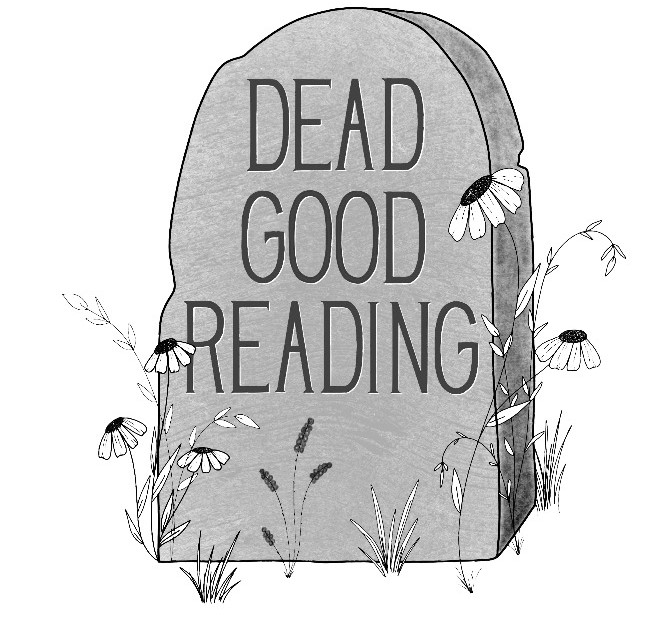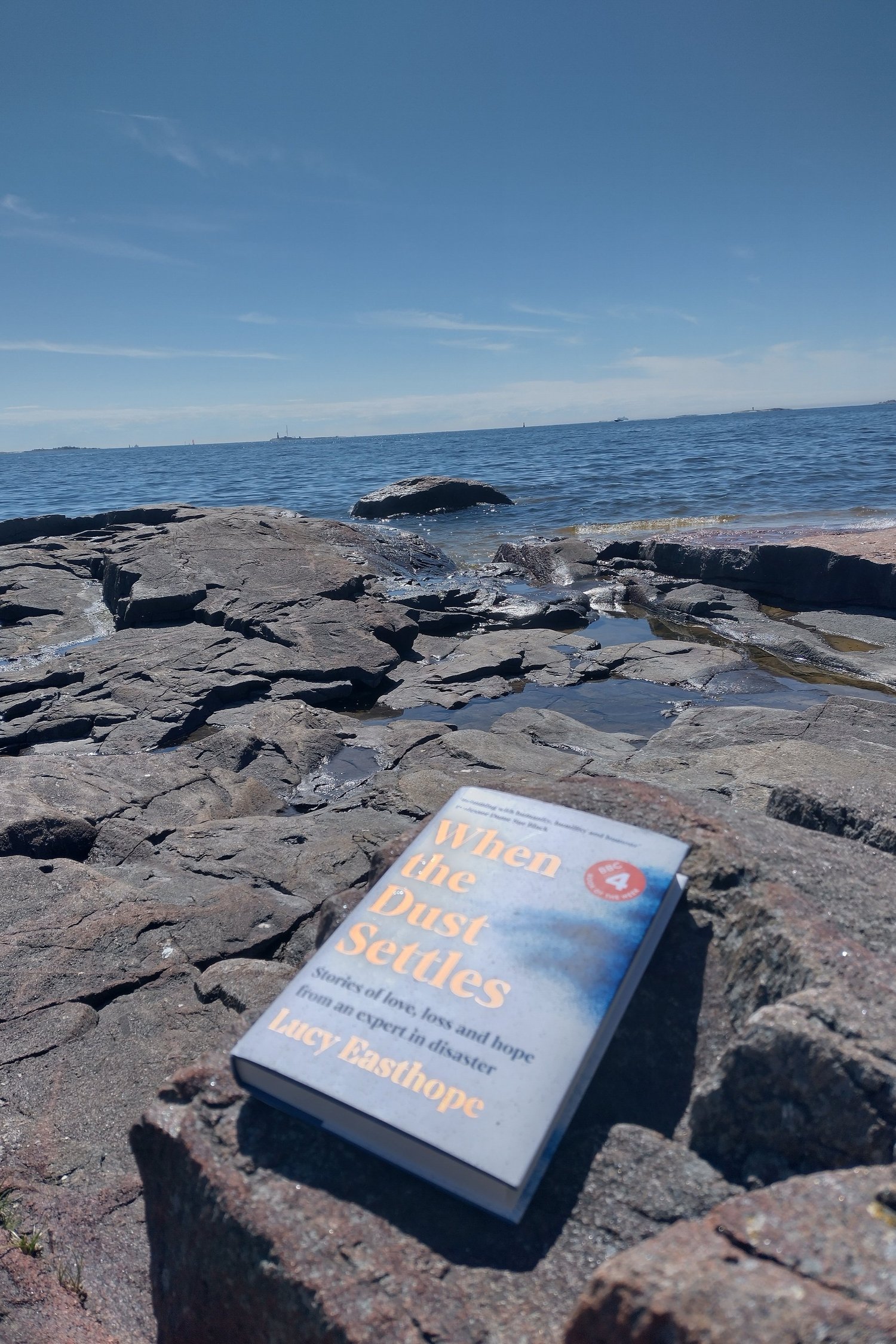The opening of When The Dust Settles gives the atmosphere of a Nordic Noir. It rains. A taxi driver is taking a woman to the location of a plane crash. She could be a detective. A forensic anthropologist. A private investigator on her way to the scene. Lucy Easthope is none of these things, but instead she is a leading authority on recovering from disaster. She makes the plans. She tests the plans. She makes sure the plan is followed, or adapted, when disaster strikes.
Think of a potential disaster, and not only will Easthope have thought of it, she will probably have a binder at hand to tell you what to do in situation X,Y and Z. She is the kind of person fictional character Lesley Knope, from the television series Parks and Recreation would admire (and probably regularly be on call with to discuss potential scenarios). In one episode of the series, the Parks and Rec department need to practice their disaster management, in order to get the appropriate safety certificate for their town. Knope is well prepared, and has several binders to fall back on. Yet, as obviously there needs to be some dramatic narrative in the show, Knope is being sabotaged by one of the people on the disaster management team, as he wants to get political gain out of Knope failing the scenario. It wasn’t until I read When The Dust Settles that I realised how useful practicing for potential disasters, hazards and pandemics actually is (and that it is so much more than a silly plot line) It is also very comforting to know that people like Easthope are out there, literally preparing for the worst.
“There are two main aspects of our profession: writing the emergency plans, so that people have a map to follow when the worst happens, and responding, following in the wake of disaster to set the pathway for recovery”
— When the Dust Settles. Page: 6.
When The Dust Settles is a memoir focusing on Easthope’s career to date. 9/11, the tsunami of 2004, the 7/7 bombings in the London Underground; Easthope has been involved to some extent in all of them. She has also been involved in some of the disasters as a private person, who just happened to be there. For example, she was riding the tube on 7/7 and thus experienced first-hand how people in the field respond to disasters when they actually happen. As there has been a couple of events that Easthope has been involved in, I did increasingly worry she just happens to be there wherever disaster strikes. But, as Easthope, notes, there are also so many positive happenstances in people’s lives that people do not give enough credit to and just file as being ‘coincidental’ So why shouldn’t she be near a bombing/crash/natural disaster as it is happening?
The MH17 plane that was shot when flying over Ukraine, has shown me how small the Netherlands as a country is, especially in the face of tragedy. Most of the victims were Dutch, and whilst I don’t know anyone personally, I know several people who lost loved ones on that flight. This plane crash gave me a strong sense of ‘this could have been me’ and hit close to home (not physically, the Bijlmerramp, which Easthope also mentions, happened about 10KM from where I grew up, but as I was 3 at the time, I barely registered this) It is interesting to see that if you share a nationality with victims, you are able to relate much more, as plane crashes on the other side of the globe have never made the same impact.
I know where I was after 9/11. I was 12 and, after school, went to play at my friend’s house. Her mother and a friend where watching the telly, which showed the twin towers. I think we watched for a bit, and then went to play outside. As 9/11 dominated the news cycle, and every broadcast for weeks and months to come, the images, especially the ones of people jumping out of the tower, are seared in my brain. I will also never forget that my friend’s mother was very concerned about the fact that we also had a World Trade Centre in Amsterdam. I found this utterly ridiculous but I think her statement says a lot about the fear and thoughts that occur when faced with an unknown scenario. Luckily, there are people like Easthope with a plan.
Think of any disaster in the past 20 odd years, and it will probably be featured in the book. At least, if UK victims were involved, or if the event took place in the UK. The book also reminded me of several events that I had blocked from my memory, even quite recent ones, such as a truck that was used for human trafficking, which contained the bodies of 39 Vietnamese victims.
“I have never been afraid of the dead, I think of them as my kin. I was taught early on about the beauty of decomposition and the way we break down into our constituent chemicals and minerals, so dead bodies, in whatever state, have never horrified me, although the stories they tell sometimes do”
— When the Dust Settles. Page:53
Just the sheer amount of tragedy recounted in the book shows that you must be a well-grounded person, with a strong support network, to be able to work in this field. Easthope finds this support in her husband, who she often refers to on twitter as #DisasterHusband, which I absolutely love. I feel it is also serendipity that a disaster management specialists finds herself to be in love with a pilot, as that is just a flying disaster waiting to happen. Easthope talks about how her husband can be a great source of support, but also that she often just wants to hide under the covers and talk to no one. Her husband at one point experienced a medical emergency, and Easthope talks about how in hospital she was convinced her husband had died. In a simultaneously heart-breaking and hilarious scene (as DisasterHusband is still very much alive), she recounts how she scooped the plastic bag with her husbands bloody shoes and clothes out of the medical waste bin in hospital. Given her work experience, she knows of the importance of keeping the last things that are left of people’s loved, and fighting the nurses, she takes the plastic bags with bloody items home. Easthope is a strong advocate for the keeping of artefacts and belongings after a disaster. The long-term effects of decisions made early on can have a long-lasting impact (both positive and negative) on those who are left behind. I think taking her husband’s blood-soaked items home was partly a case of what we call beroepsdeformatie in Dutch, or an occupational hazard, and partly making sure she would have what she needed when trying to make sense of loss.
Alongside all the big, globally significant disasters, Easthope also talks about the disasters that can occur on a personal level: she writes open and honestly about her pregnancy losses, how dangerous pregnancy is for her body, and the trouble she had in having children. This disaster does come with a happy ending, as Easthope currently has two daughters.
In When the Dust Settles we see how over the years the UK government becomes less invested in investing in disaster planning. The Grenfell tower fire, and other disasters, are not managed in the way they would or should have been, and the government is more concerned with keeping up appearances than actually preventing or adequately managing worse-case scenarios. Which must be particularly frustrating for people like Easthope, for whom disaster planning is their bread and butter. She has to fight against the increasingly common narrative of ‘if only we had thought about this before’, ‘we were not prepared for this’, or, ‘these things are unprecedent’ etc. Pandemics are one of the main disasters that are planned for, yet political choices have let to the UK being one of the countries with one of the poorest outcomes globally.
When the Dust Settles is a great behind-the-scenes in disaster management. Easthope both shows the humanity of all the victims of disasters, as well as the humanity of the professionals involved in the aftermath of terrible events. I feel relieved that there are people like Easthope out there, thinking of worst-case scenarios, advising people who might be in great emotional turmoil. I sincerely hope that those in charge will continue to listen to her, as I think a lot of heartache is prevented when disasters are managed, properly, honestly and without any political agenda.


Leave a Reply